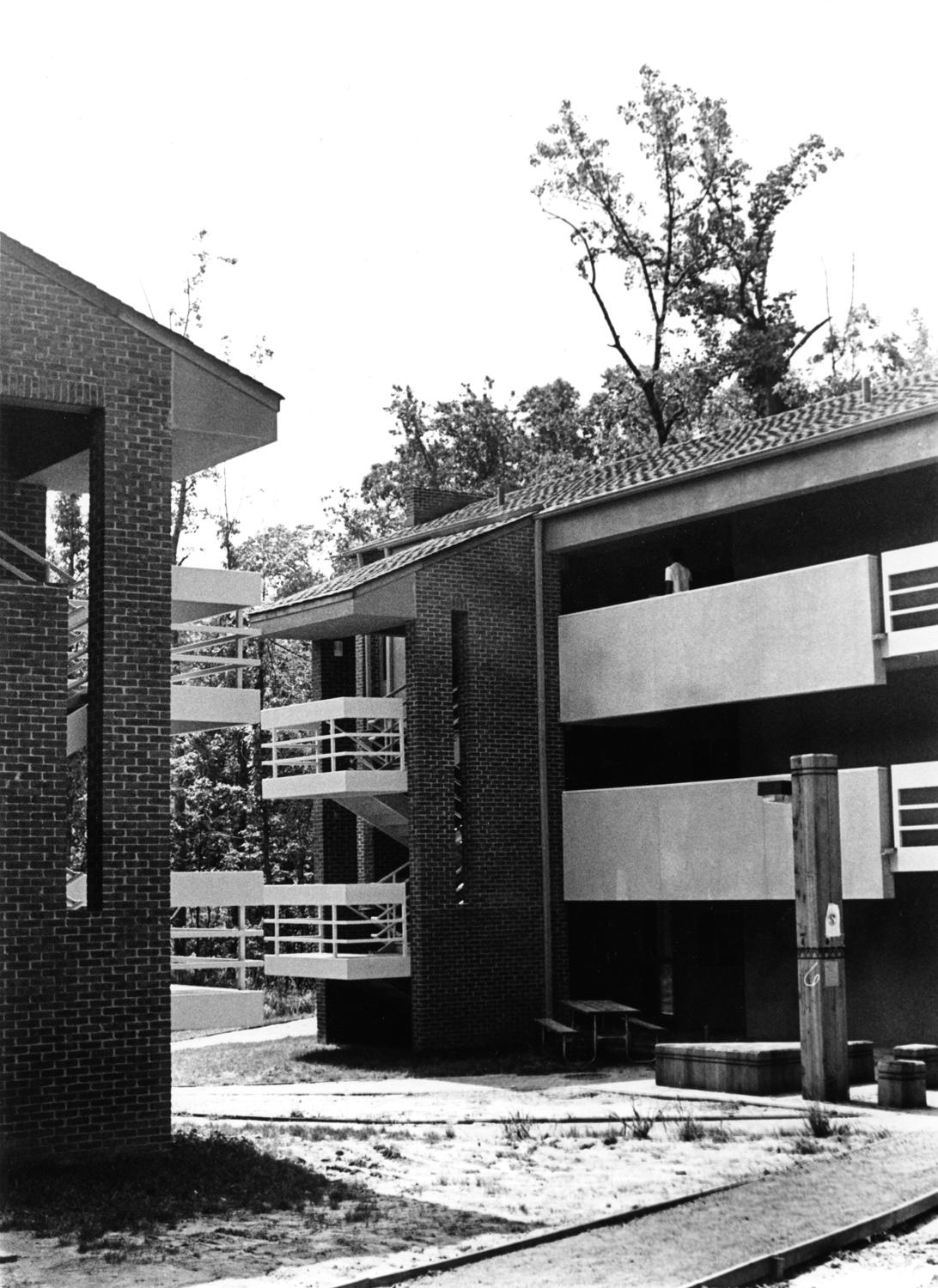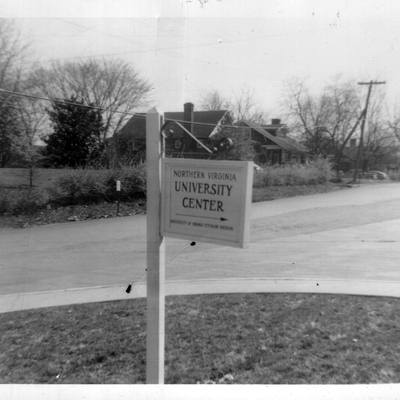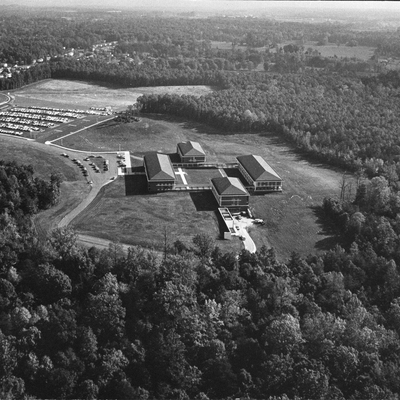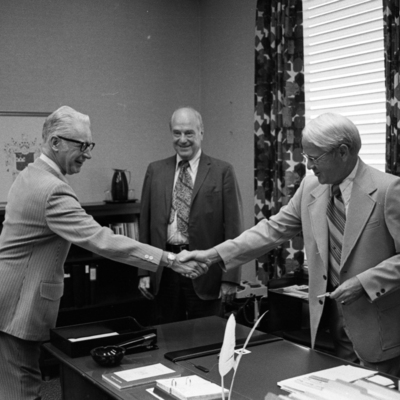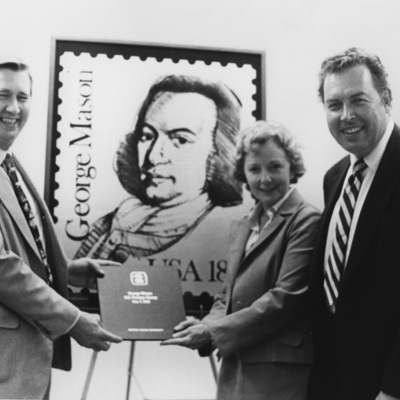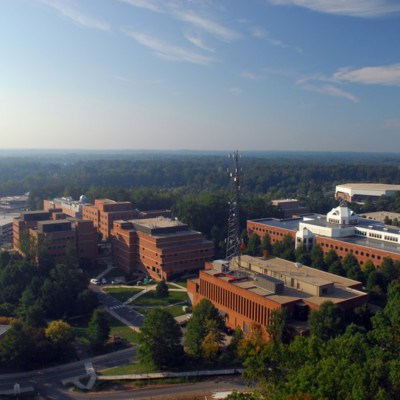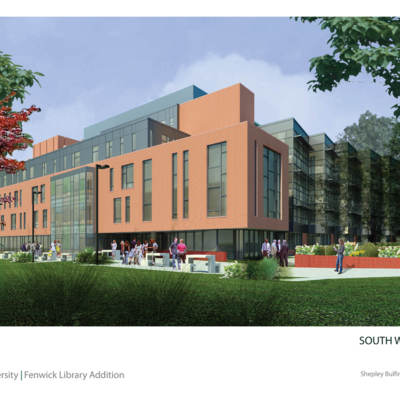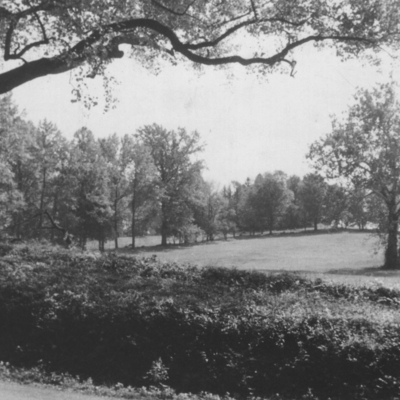The Student Apartments: From A Commuter College to a Residential University
George Mason’s rapid expansion from a branch campus of the University of Virginia to an independent university in such a short span of time was mirrored by its geographic and academic growth. The number of students who attended the University increased at a steady rate of approximately 35% a year during the mid-to-late-1960s. [1] By the mid-1970s, student requests for on-campus housing were beginning to create an identity crisis for the new university, which many had previously considered a commuter college.
The construction of on-campus housing had been under discussion for a number of years. Dr. Lorin Thompson, Chancellor of George Mason College, met with local construction experts to discuss apartment-style housing for students as early as 1968. [2] The college, then still a branch campus of the University of Virginia, had been chartered through a 1956 resolution that expressly denied permission to construct residential dormitories, as the college was to serve only the local region. The accelerated movement by the General Assembly and the State Council of Higher Education to expand Mason’s stature to a large independent university was set in motion by the Russell Report in late 1965. Hence the notion that it would not someday have student housing was becoming more and more antiquated.
Upon George Mason’s becoming an independent institution in 1972, the housing debate arose again. A meeting was called on October 29, 1973 to decide whether the university needed and wanted student housing, and if so, how it should be financed. [3] Lutrelle Parker, chairman of the Board of Visitors’ long-range land use committee, voiced some of the University officials’ enthusiasm when he stated: “My own philosophy is that a great university should have diversity and needs student housing.”[4] Others, like university patriarch C. Harrison Mann, Jr., would cite the increase in operating costs for both the state and the students and smaller budget allocations as deterrents to construction. No particular supporter of on-campus housing for George Mason, Mann also considered it his duty to remind the BOV of the stipulation in the 1956 resolution. [5] In the late Fall of 1973, the Board of Visitors consented to further discussion and possible action and asked for a presentation of dormitory financing options during its February 1974 meeting, believing the “issue of student housing to be an important one which has crucial implications for the future of George Mason University”. [6]
By 1976 the administration of the University had consented to the construction of student housing, and a plan was drawn for nine three-story apartments to house 497 students. Ground was broken in March 1976. [7] The two-, four-, and six-person apartments were designed to meet the need for housing that faced many commuter students at the time. The university had actually appealed to the local community to reach out to the 30% - 40% of the student body who struggled to find inexpensive housing during a time of economic distress and in an area with limited public transportation. [8] Apartment spaces were reserved for exchange students, athletes, minority students, and students with physical disabilities. The remaining spaces were open for out-of-state and commuter students. [9] The apartments were to be completed by the beginning of the 1977 school year. Wilson Sherman, the contractor, citing “abnormally bad ground conditions, bad weather, [and] the substantial number of changes and supply problems” among the unexpected delays, could not finish construction on time. The delay was more than just problematic for the construction company. The University had already promised housing for a number of students and had collected money from them.
These delays sent students already assigned to new dorm rooms instead of hotel rooms on Route 50, three miles north of campus. [10] Moving into a hotel was one of three options given to students whose dorms were not finished. Students could also receive a full refund or stay at home until the completion and receive a partial refund or prorated rent. [11]
While Dr. Robert C. Krug, Vice President for Academic Affairs, recalled that the students had a terrific time living in the hotels (they enjoyed throwing parties), the novelty soon wore off for many of them. [12] Students complained because they had no way to cook and were exceeding their budgets by eating out for every meal. They wanted to move into rooms with kitchenettes, but those weren’t available until after Labor Day. This problem was temporarily relieved in mid-September as students voluntarily “tripled-up” in the newly-available kitchenettes to cut down on costs, but feelings of isolation from the campus still remained. [13]
The university had been running free shuttle buses back and forth to the campus from the Quality Inn and Breezeway Motel every hour, and in response to student requests, weekend shuttles were offered as well so that the “inmates,” as the hotel-bound called themselves, could attend events and parties on campus. [14] The weekday shuttles cost the university about $1500 alone. [15] There were approximately 105 students living in the hotels, so the bill for those rooms also fell to the university, as well as long distance phone calls made by the students in the hotels and the overtime hours necessary to complete construction. George Mason withheld ten percent from each contractor’s payment to offset its costs. The University’s losses were then deducted from the final payment to Sherman. [16]
Five of the nine apartment-style buildings were opened on October 15, 1977, and residents were finally able to move in, though some assignments were temporary pending the completion of the other four units. [17] Though the apartments still had bugs to be worked out—the lights went out the first night and many students had trouble with the plumbing—the students were happy to finally be moved in and to have a college experience in which they interacted with one another outside of class.
While the delay caused a great deal of stress for both the administration and the students, the $4.15 million apartments ushered in a new era for the university. [18] As enrollment continued to skyrocket, demands for on-campus housing in the coming years would shape the university’s future and change the dynamics of student life forever.
Browse items related to the beginnings of campus housing at George Mason University.
